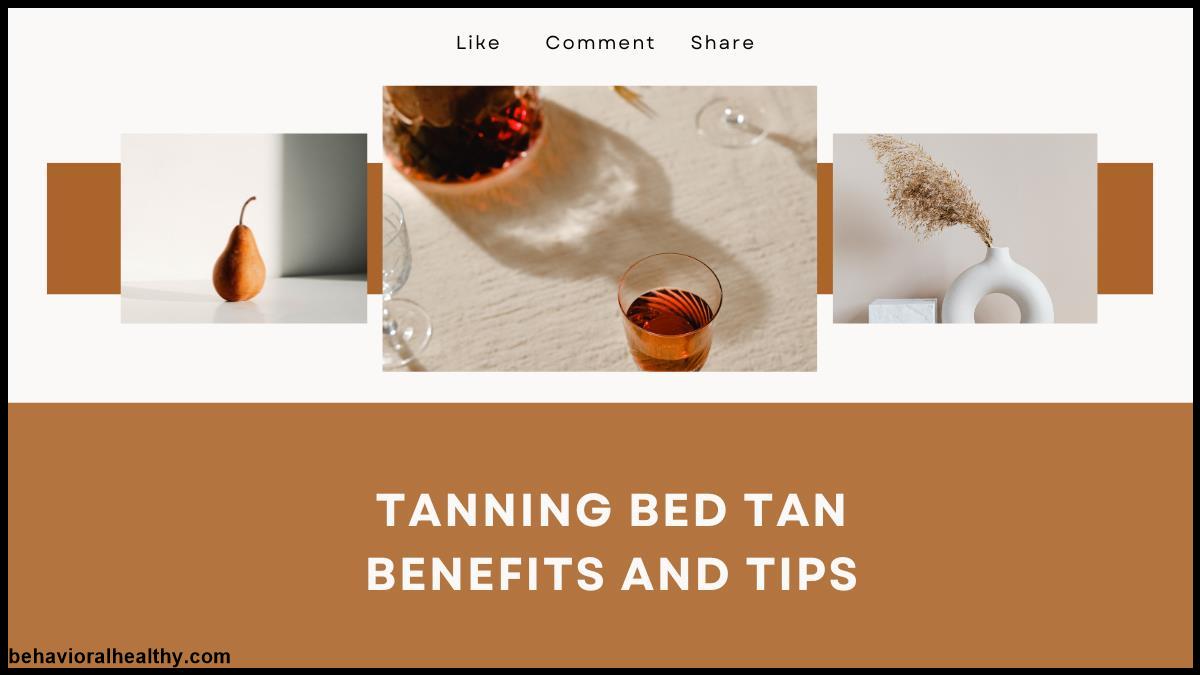Tanning Bed Tan features specialized fluorescent bulbs that generate ultraviolet light. There are two primary categories of this UV radiation.
Table of Contents
Tanning Bed Tan- How It Works and Its Benefits
An alternative to sunbathing, tanning bed tans provide a controlled indoor setting for a better glow. To replicate sunshine the tanning bed tan use ultraviolet light bulbs that cause the skin to produce more melanin and darken the complexion. These beds often release UVA and UVB rays. It causes instant tanning and UVB and encourages longer-lasting effects by activating the skin's deeper layers.
Due to their ease particularly in areas with little sunlight or during the winter. The hazards of frequent use include skin damage and a higher chance of developing skin cancer. Experts advise limiting exposure and selecting moderate session durations to reduce these hazards. Let's discuss more about it in detail:
How Tanning Bed Works?
Tanning bed tan features specialized fluorescent bulbs that generate ultraviolet light. There are two primary categories of this UV radiation.
UAV Rays: UVA Rays oxidize the skin's natural melanin, allowing them to penetrate deeper into the skin and rapidly darken.
UVB Rays: A longer-lasting tan is caused by UVB rays having a shorter wavelength and mainly promoting the synthesis of new melanin. Sunburns are also primarily caused by UVB radiation.
Most contemporary tanning beds emit a combination of UVA and UVB radiation to replicate the tanning process that occurs naturally in sunshine. The ratio and intensity of these rays might differ. Some beds are made to be softer. Some are made to give a deeper tan.
The Attractiveness of Sunbeds
One of the main reasons individuals use tanning beds is to get a glossy glow. This glow is connected to beauty and health. Tanning beds are available all year round and are practical for people living in areas with little sunlight in the winter.
Tanning beds are also used for medical reasons. For instance, treating illnesses like vitiligo and psoriasis with phototherapy entails controlled exposure to UV light. Nonetheless, these procedures are carried out under medical supervision, and UV exposure is closely controlled to reduce hazards.
Benefits of Using Tanning Beds
- Easy Access and Time Saving
One of their main advantages is convenience. The tanning beds can be used in any season and at any time of day. A tanning bed session can save time for people with hectic schedules by producing results comparable to hours in the sun.
- Regulated Setting
Users can adjust the length and intensity of their UV exposure in the controlled setting that tanning beds offer. Contemporary tanning beds frequently have timers and customizable settings to provide a more customized tanning experience. One typical worry with natural sunbathing is that this regulation reduces the possibility of excessive UV exposure.
- Visual Advantages
Being tanned is frequently linked to feeling more confident and having a better appearance. A tan can improve the skin's complexion, make imperfections less noticeable, and provide the appearance of healthy skin. This cosmetic enhancement helps many people feel better about themselves, especially before big occasions like weddings or trips.
- Managing Skin Conditions
Those who suffer from specific skin diseases may find tanning beds beneficial. Moderate UV exposure has been demonstrated to help control acne and eczema by lowering inflammation and delaying the overproduction of skin cells. This should always be carried out under a doctor's watch to guarantee safety. This bed helps you have younger and shiny skin.
Safe Tanning Practices
- Use Sunscreen
Using sunscreen is one of the most important aspects of tanning safely. Broad spectrum protection sunscreens protect the skin from UVB radiation. It is critical to choose a sunscreen with the right Sun Protection Factor. SPF of 30 or above is advised for the majority of people.
Sunscreen can be kept effective by liberally applying it to all exposed parts and reapplying it every two hours or after perspiring. The risk of overexposure is decreased because the skin can still get tanned even with sunscreen.
- Keep Yourself Hydrated and Wear Appropriate Clothing
Staying hydrated is essential for tanning safely. Exposure to the sun can dry the body and skin and increase their susceptibility to harm. Drinking lots of water keeps the skin moisturized and strong. Moisturizing the skin is just as crucial since it restores and calms the skin's moisture barrier helping maintain a healthy tan.
Safe tanning techniques also include wearing protective apparel and accessories. Wearing lightweight and UV-blocking sunglasses can help protect delicate skin areas from the sun.
Wrapping It Up:
In order to provide a controlled method of getting tanning beds, UV radiation must be used to mimic the effects of the sun. Although using them can have advantages that includes mood enhancement and vitamin D generation, moderation and caution are necessary to guarantee safety.
Tanning bed tans are an easy and efficient way to get a shiny look. Users can take advantage of their advantages while lowering potential risks by knowing how they operate and adhering to safety regulations.

